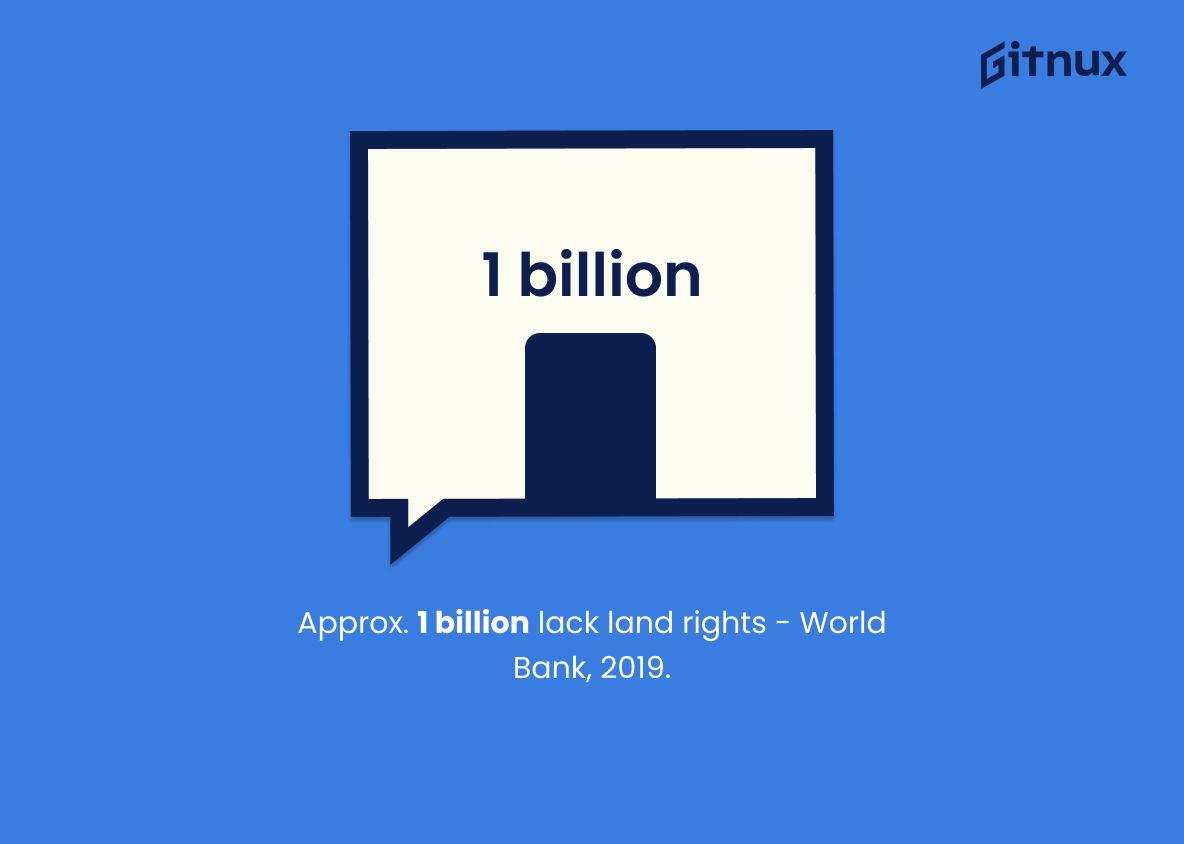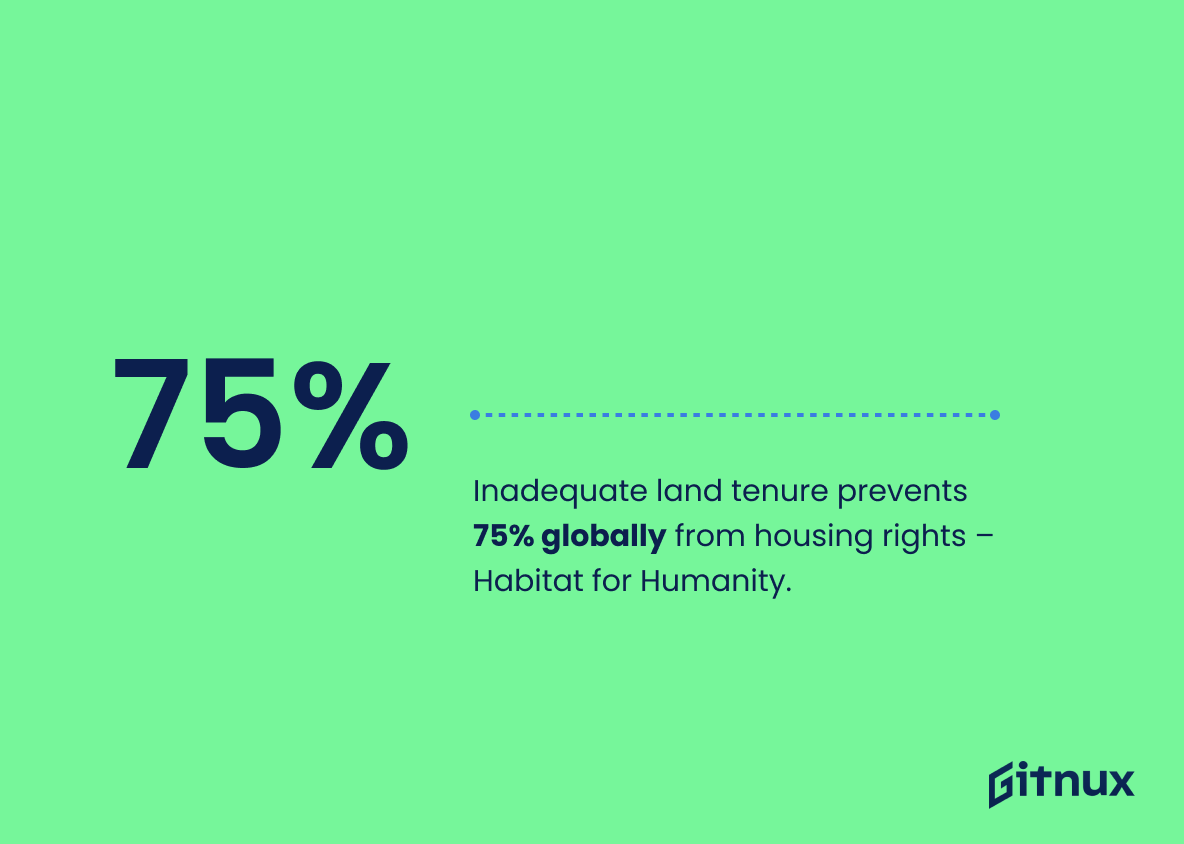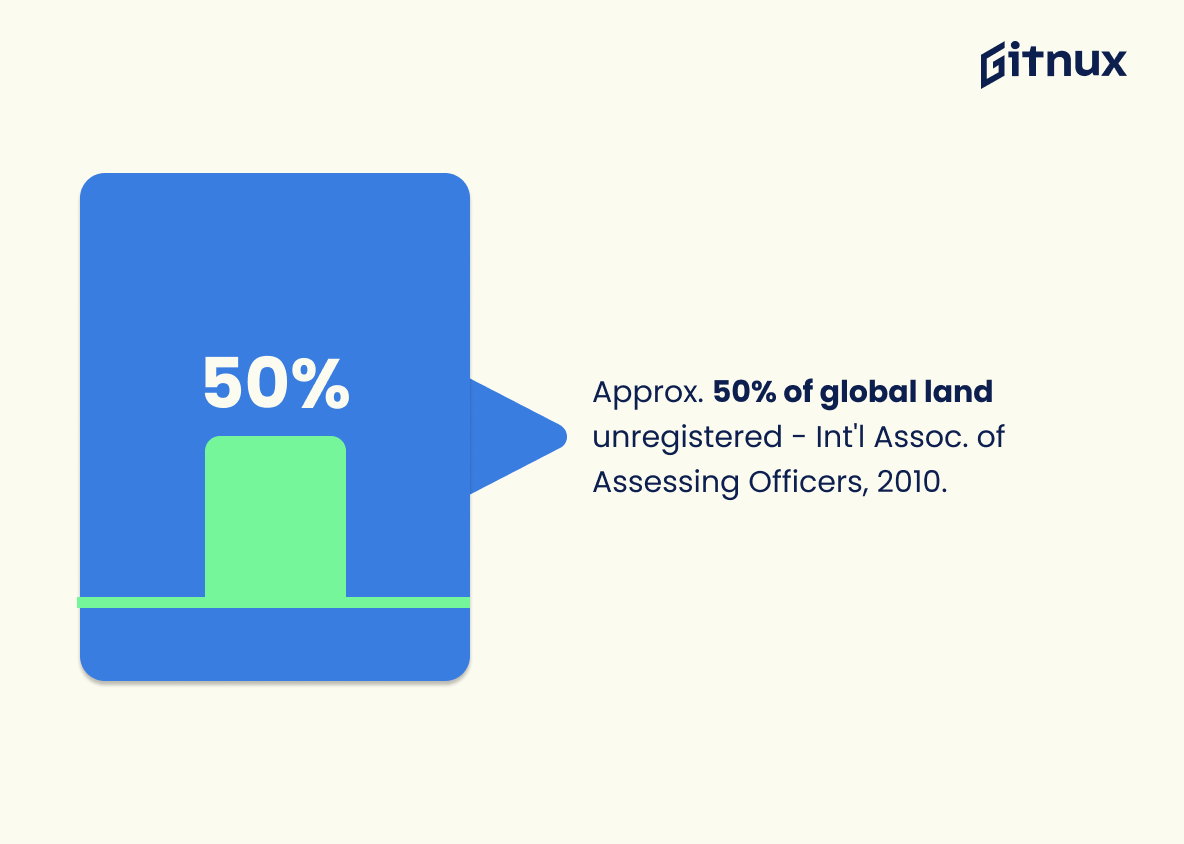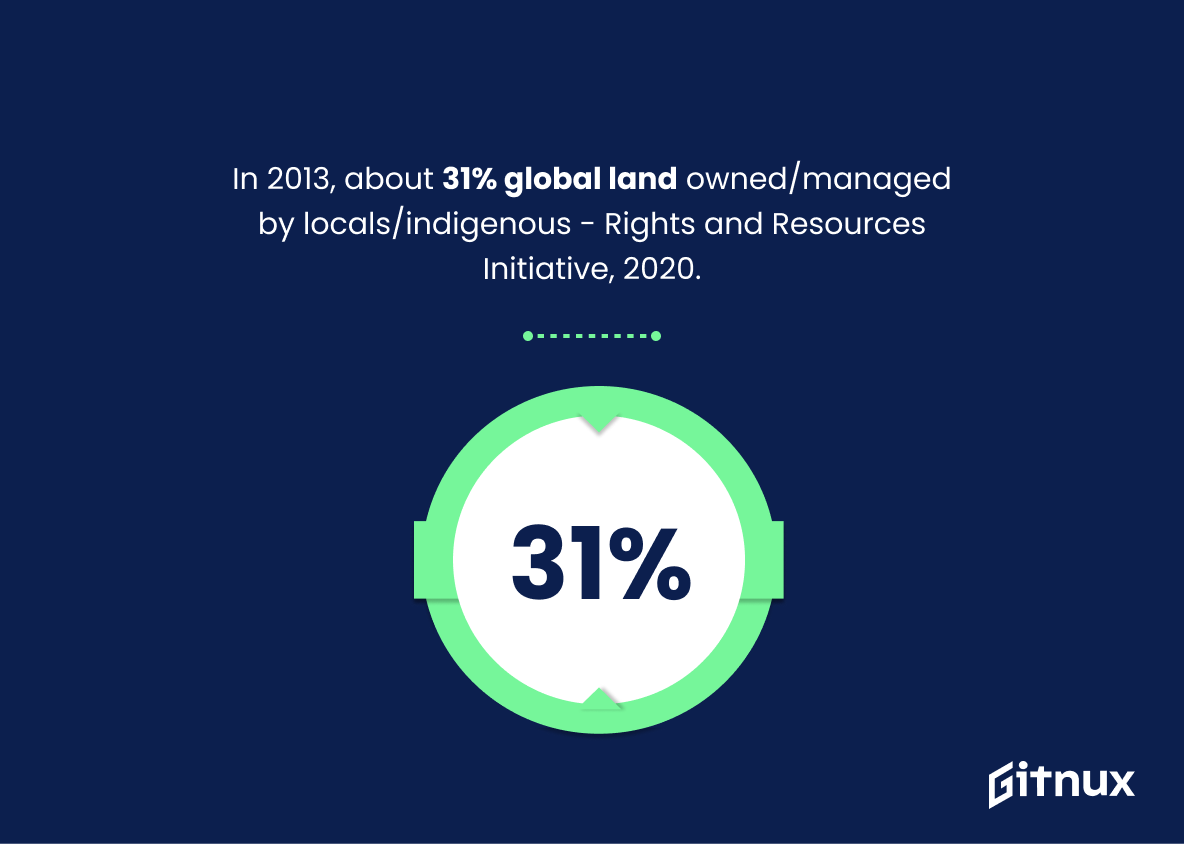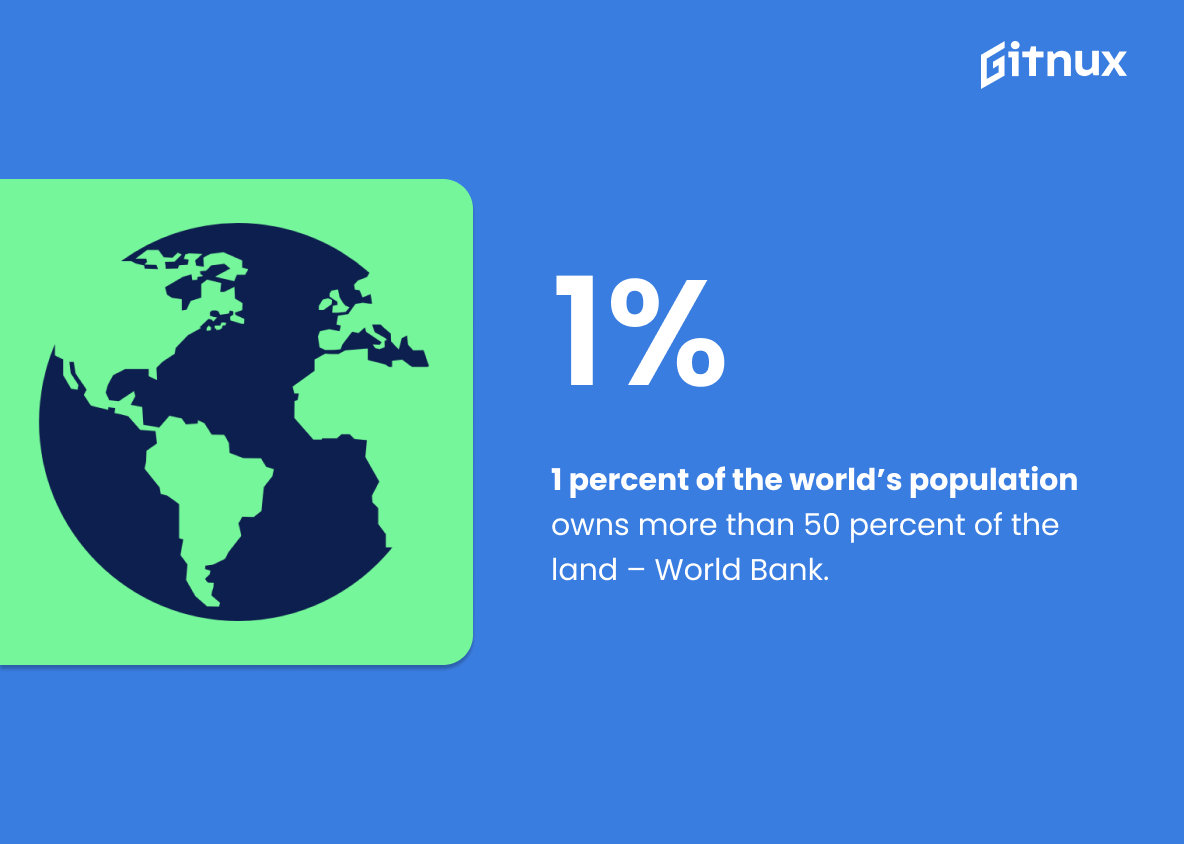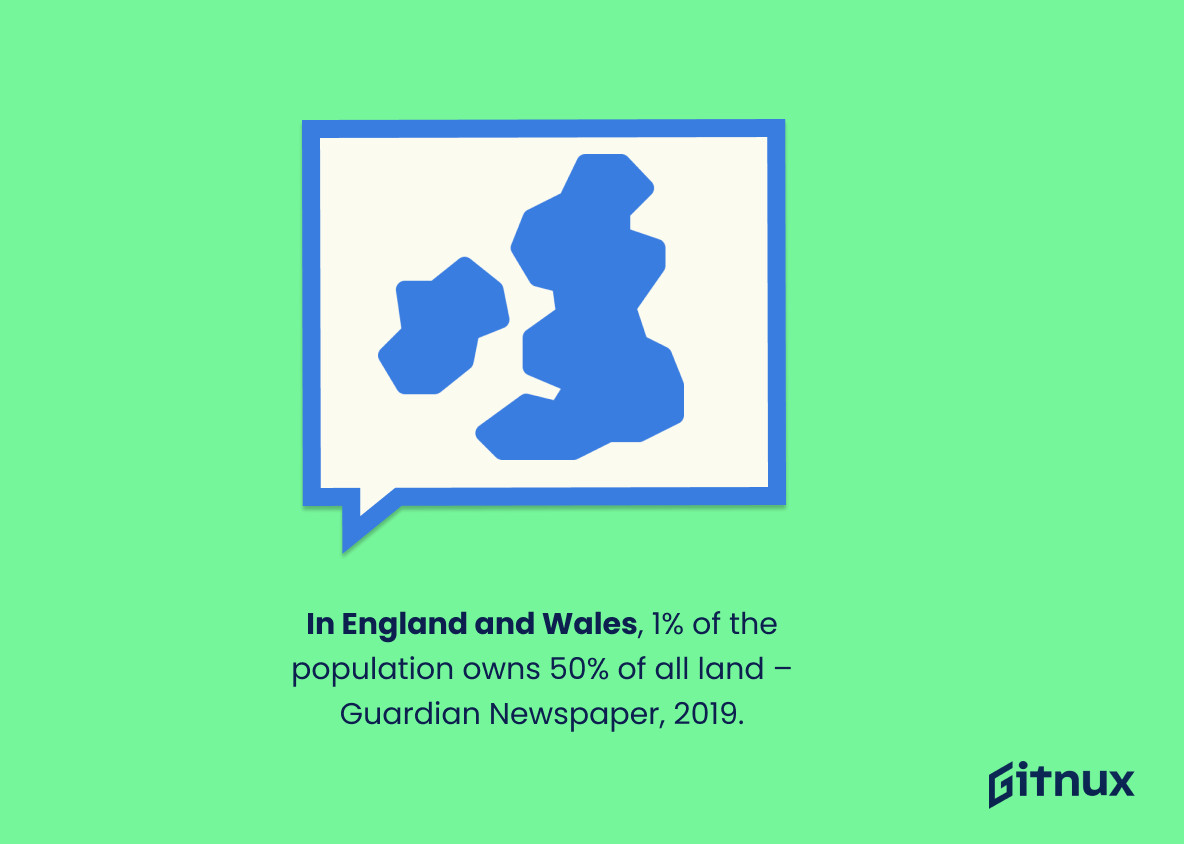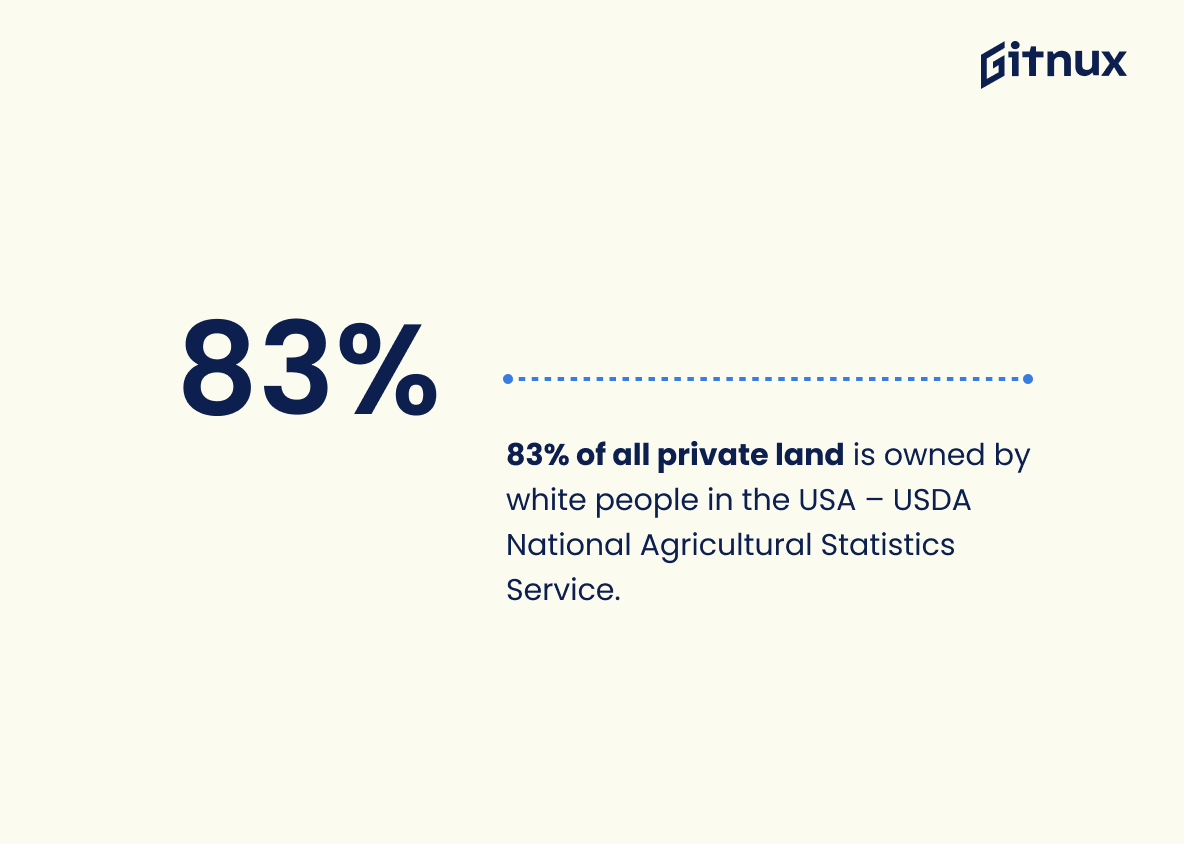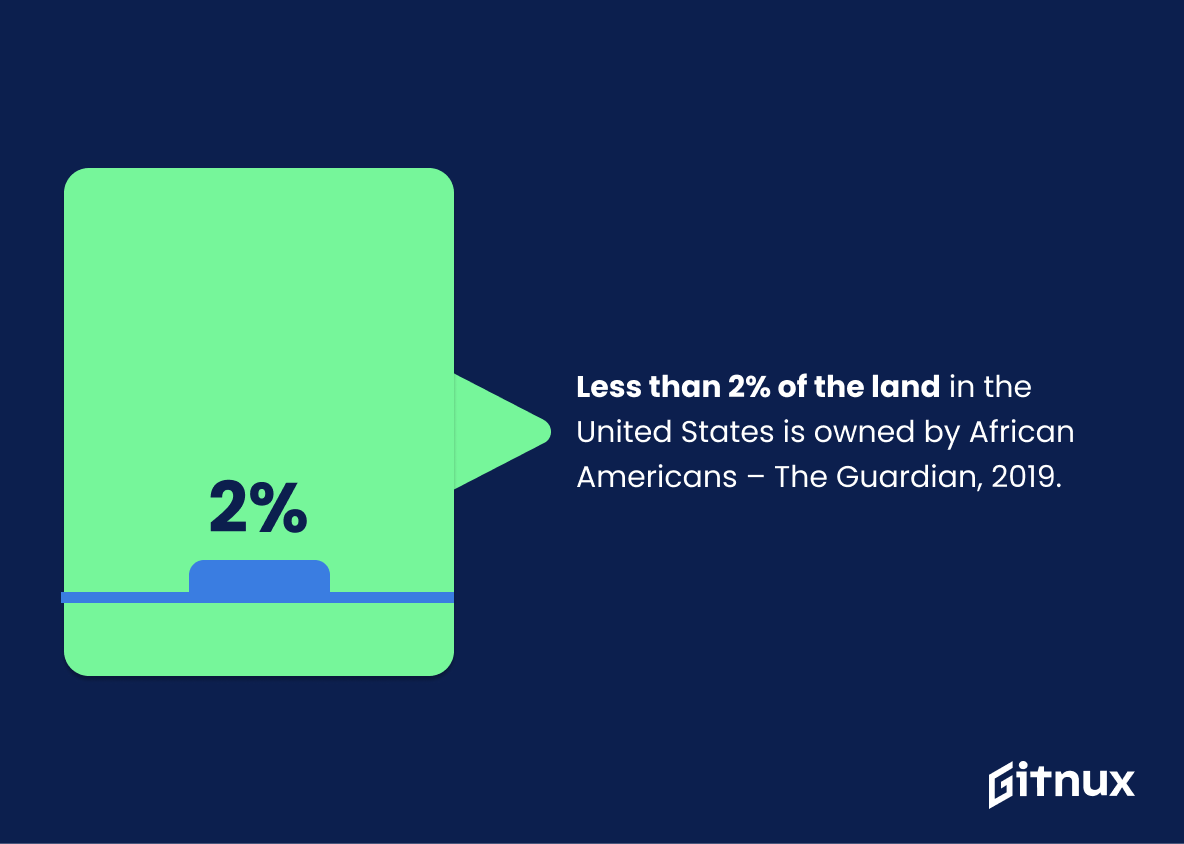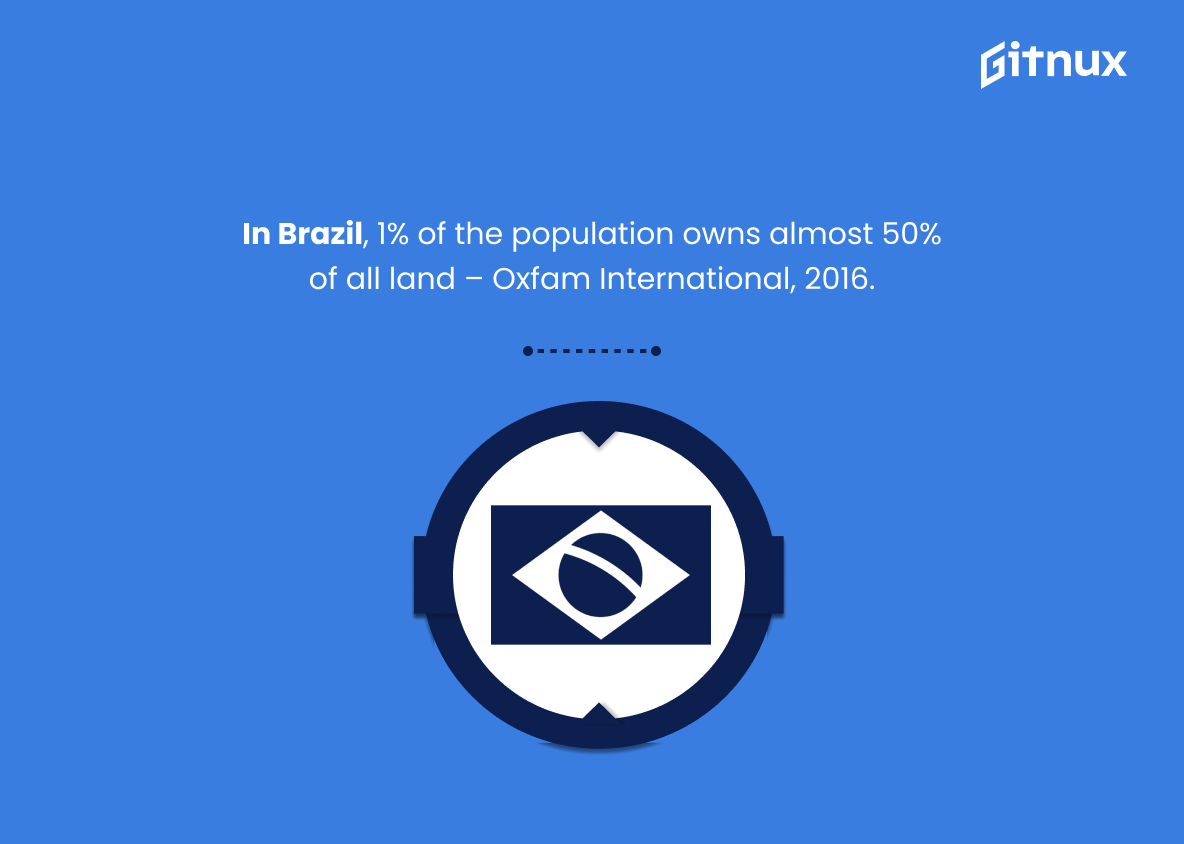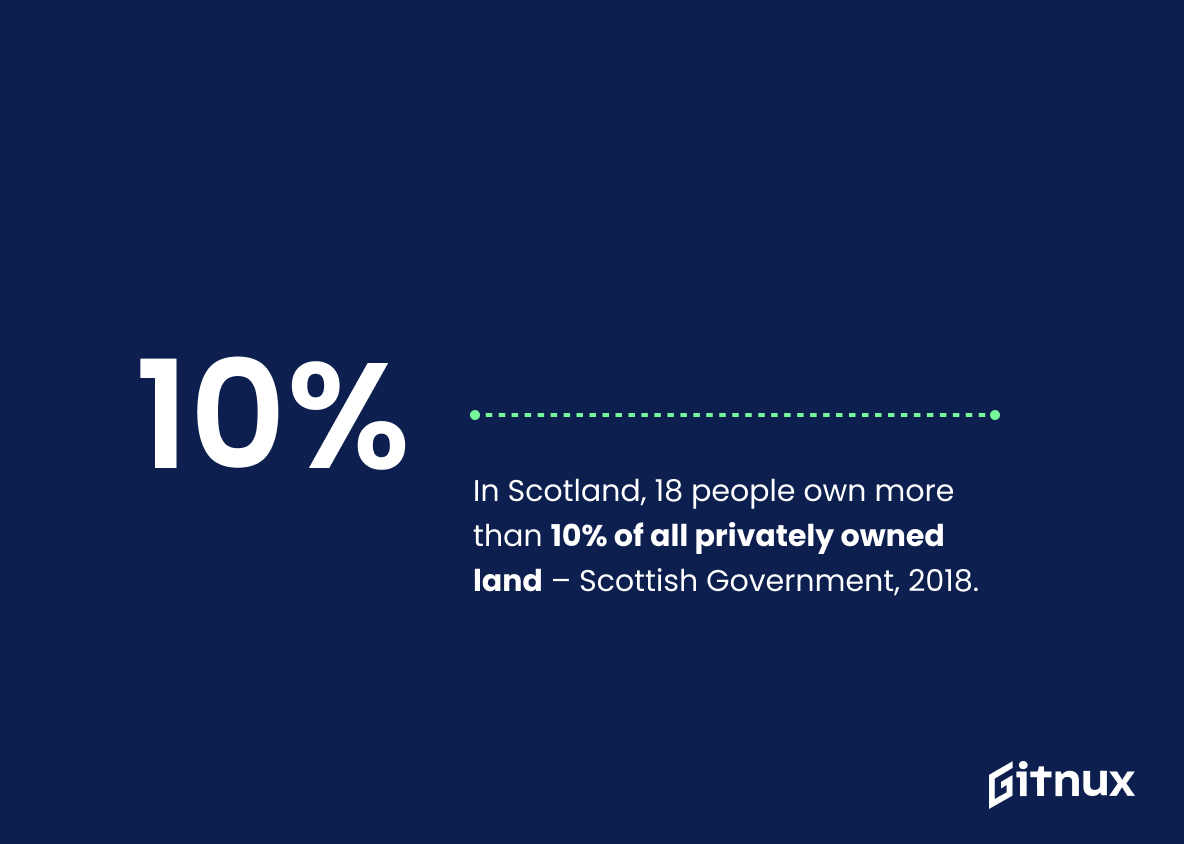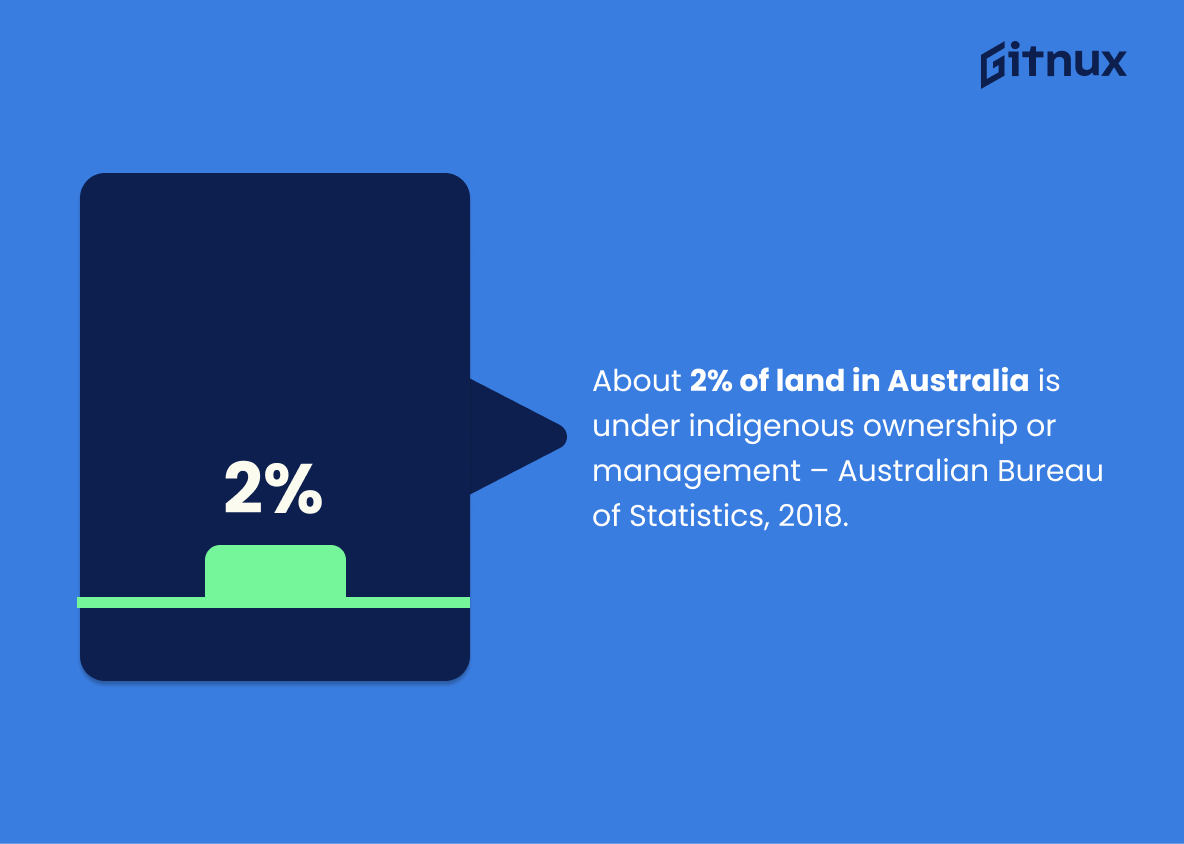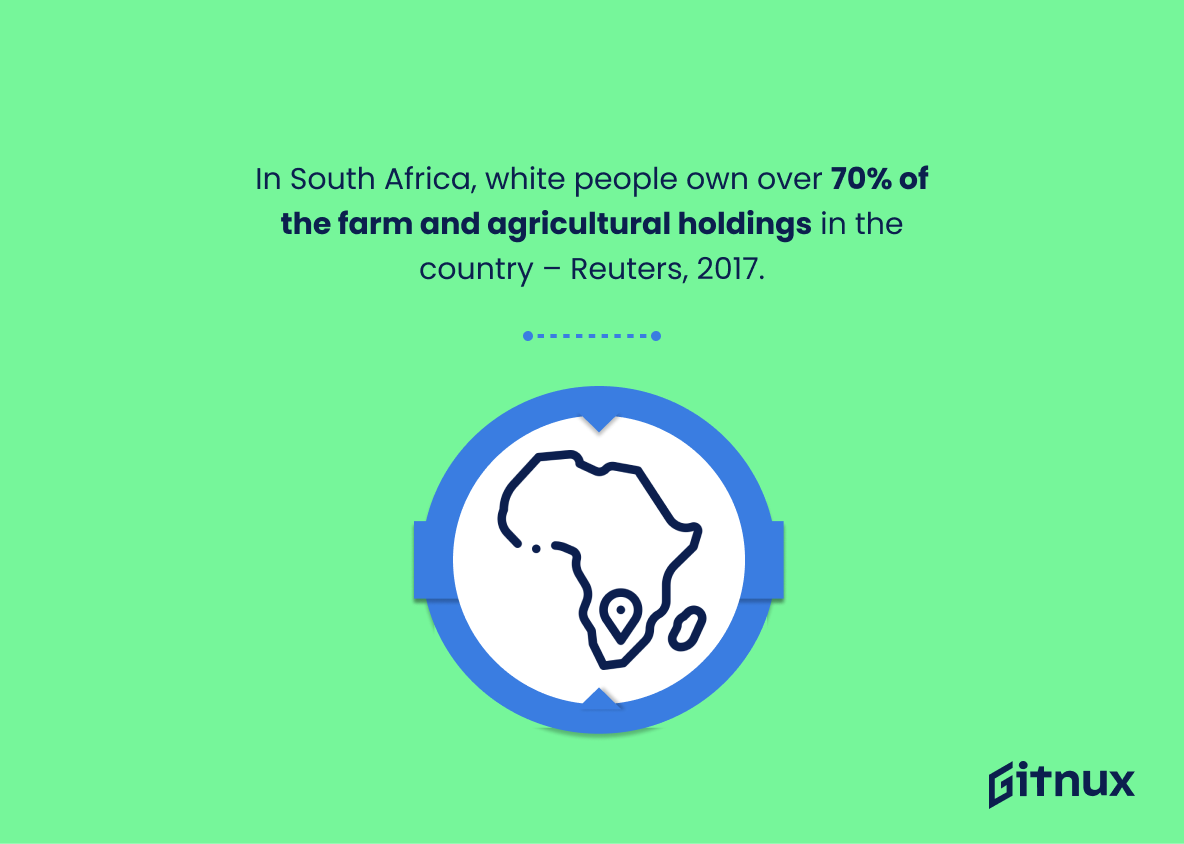Land ownership is a topic that has innumerable implications, from economic development, agricultural practices, housing security to privacy rights and beyond. Dive into the complex world of land ownership with us where we unravel the enthralling statistics that provide valuable insight into who owns our planet and how ownership patterns affect myriad life elements.
Regardless of whether you’re a policy maker, a budding entrepreneur, an investor or a simply curious reader, understanding land ownership statistics is crucial. Join us in this informative exploration to make more sense of the sprawling statistics of the land beneath our feet.
The Latest Land Ownership Statistics Unveiled
Only 0.6% of the total American farmland is owned by non-residents – United States Department of Agriculture, 2018.
Unraveling the fabric of American land ownership, a fascinating thread emerges courtesy of the United States Department of Agriculture’s 2018 report. Merely 0.6% of the nation’s total farmland nestles under the protective wing of non-residents. This nugget of information, taken lightly, could very well blow away like dust in the wind, but it carries significant weight when woven into the tapestry of land ownership statistics.
Our knack for numbers sparks curiosity about the factors and implications behind this tiny fraction. Are the acquisition hoops too high, or is American soil simply not appealing enough? To the contrary, it might resonate with the strong underlying American ethos of self-reliance, where citizens prefer to keep their fertile plains close to their chests.
Moreover, this statistic provides a clear viewpoint from which to delve further into the patterns of American land distribution. It anchors and enriches the conversation about land ownership by grounding it in concrete data – a statistic ringing with the rawness of reality.
It is estimated that as many as 1 billion people in the world lack legal rights to the land they live on – World Bank, 2019.
Delving into the depth of this startling figure by the World Bank, it paints a vivid picture of the global landscape of land ownership. The vast number – an overwhelming 1 billion people – underscores the extent to which land ownership disputes, contradictions, and complications pervade our world. This dramatic statistic illuminates the profound discrepancies in land rights, serving as a potent reminder of the sheer multitude of individuals who live on land they don’t legally own.
In the context of a blog post about Land Ownership Statistics, it becomes an imperative focal point. It urges us to consider policy changes, land reform efforts, and potential solutions, turning abstract numbers into grounding insights about the reality of inequity in global land ownership. Essentially, it serves as a catalyst for dialogue and action around an issue of such fundamental importance that impacts a significant proportion of our international community.
Lack of proper land tenure is a reason that 75% of the world cannot access housing legal rights – Habitat for Humanity International.
The profound weight of this statistic on global land ownership cannot be overstated. It amplifies the pressing issue of the vast majority – a staggering 75% – of the world’s population who are deprived of housing legal rights due to the deficiency of appropriate land tenure. This issue is the silent echo resonating through international politics and social equity debates. By understanding these numbers in the context of land ownership, we can dig deeper into the fault lines of land administration, effective property laws, and social justice.
This unveils barriers on equitable land distribution, wealth disparity and the pressing need for legal reform. Furthermore, it triggers a comprehensive exploration of how these deficiencies perpetuate poverty, hinder economic growth, and impact fundamental human rights. Without a doubt, this compelling statistic underscores the significant gaps and opportunities in the crusade for secure land rights and sustainable human settlements.
About 50% of all parcels of land in the world are unregistered, according to the International Association of Assessing Officers- International Association of Assessing Officers, 2010.
The intriguing reality of land ownership globally is that nearly half of all land parcels remain unregistered, as reflected in a 2010 report by the International Association of Assessing Officers. This astounding fact adds an unpredictable element of ambiguity to the seemingly black-and-white world of land ownership statistics. The magnitude of unregistered land can potentially impact demographic studies, economic insights, and socio-political analyses.
Moreover, it amplifies the challenges faced by governments, societies, and individuals in addressing issues related to land rights, ownership disputes, and environmental conservation. The revelation of such a figure thus compels us to reassess our understanding of land ownership, ultimately adding new depth and perspective to the analysis presented in a land ownership statistics blog post.
As of 2013, approximately 31% of global land area was owned or managed by indigenous peoples and local communities – Rights and Resources Initiative, 2020.
Taking note of this critical stat allows us to delve deeper into the complex tapestry of global property rights, reflecting the profound role that indigenous peoples and local communities play in the stewardship of our earth. Despite being routinely marginalized, this 31% stands as a stark testament to their lasting influence on land ownership.
Moreover, this figure offers a fascinating glimpse into the different paradigms of land management across the world. Arming ourselves with this knowledge paves the way for more informed discussions about land ownership, territorial rights, cultural heritage and their intricate intersections – all integral compartments of any comprehensive exploration of land ownership statistics.
1 percent of the world’s population owns more than 50 percent of the land – World Bank.
Emblazoning the undeniable reality of wealth disparity on the canvas of land ownership, the World Bank data strikingly portrays that a mere 1% of earth’s inhabitants hold dominion over more than 50% of its land. This staggering fact, consolidated into a solitary statistic, pulsates at the very heart of a discussion on global land ownership.
In the narrative of a land ownership statistics blog post, such a profound asymmetry beckons pondering upon the power dynamics and the economic implications of this vast discrepancy. As we delve deeper into this study, the statistic palpably amplifies the marginalization of the majority of world’s population under the shadow of this restricted elite.
It serves as an uncomfortable yet necessary reminder of the widening chasm between the haves and the have-nots, highlighting ongoing issues related to social justice and equitable wealth distribution. It frames a poignant discussion on how this disproportionate distribution impacts global poverty, food production, populations’ housing affordability, and even political power.
Moreover, the subtle undertones of ecological impact and conservation hidden in these figures cannot be overlooked, with implications that reach far beyond the boundaries of economic disparity. This statistic thereby heightens the perspective, impelling a thoughtful introspection into our policies about land ownership and distribution. Therefore, this startling revelation propels our examination of the complex and asymmetric world of land ownership, taking us beyond the realms of raw data and into the intricate fabric of societal, economic, and environmental discourse.
In England and Wales, 1% of the population owns 50% of all land – Guardian Newspaper, 2019.
Reflecting on the stark revelation in the Guardian Newspaper from 2019, that a mere 1% of individuals from England and Wales possess a staggering 50% of all land, one can’t ignore the profound implications of such a reality. This solitary percentage, drawn out in the broad tapestry of national data, uncovers a tangible inequality of land distribution that may be instigating enormous social and economic ramifications.
Not only does it cast a spotlight on the entrenched socio-economic divide, but it also provides food for thought on housing, environmental concerns and public space access. It brings to the fore a potentially lopsided balance of power and influence, considering that land ownership frequently equates riches, influence, and the capacity to shape delicate aspects of societal life, from urban planning to conservation policies.
Therefore, this power statistic metaphorically acts as a mirror held back to society. It exposes an inherent imbalance, raising vital questions that stretch beyond mere figures. Including such a striking statistic in a blog post on land ownership wouldn’t just be a statement of fact but would also serve as a potent catalyst for stimulating dialogue and thought on the consequential issues it implicitly raises.
83% of all private land is owned by white people in the USA – USDA National Agricultural Statistics Service.
Diving headfirst into U.S. land ownership statistics isn’t just an exploration of numbers, each piece of data shines a light on a unique aspect of our society. Take, for instance, the statistic that 83% of private land in the U.S. is owned by white people — a striking revelation from the USDA National Agricultural Statistics Service.
This piece of information forms a crucial cornerstone in comprehending the intricacies of land ownership. It unveils an entrenched racial disparity in property holdings, overshadowing the conversation with questions about historical privileges, accessibility, and wealth distribution. In the larger scheme of things, this statistic serves as a mirror, reflecting stark socio-economic differences deeply rooted in the diverse fabric of American society.
Moreover, considering this statistic in discussions around economic resources, power dynamics, and social equity can provide a perspective-altering vantage point. As we snapshot the landscape of land ownership, this fact provides the lens needed to bring the contours of racial and economic disparities into focus, drawing a clear picture of an enduring issue that warrants informed analysis and remedial action.
Less than 2% of the land in the United States is owned by African Americans – The Guardian, 2019.
Delving into the layers of data, one finds an intriguing narrative regarding land ownership within the United States. A standout figure, highlighted by The Guardian in 2019, indicates that African Americans hold the title to less than 2% of the country’s land. This statistic throws a palpable light on the systemic imbalances rooted deeply within our society, illustrating a stark contrast in wealth and property accumulation across racial lines.
In a blog post about Land Ownership Statistics, this figure could add fuel to discussions about income disparities, social injustice, or the historical trajectory of property ownership across races. It doesn’t just reflect numbers in columns, rather it uncovers centuries-old structural elements of inequality and injustice. After all, land ownership is not just about possessing physical space but is a cornerstone of economic stability and wealth-building opportunities – all crucial to individuals and communities in the pursuit of the great American Dream.
Therefore, acknowledging and understanding the dynamics behind this statistic isn’t merely about acknowledging a fact, it’s about igniting a conversation on how to rectify the imbalance, a first step towards shaping a more equitable society. This infuses the blog post with data-driven depth, making it an important element in fostering a more informed understanding among readers.
In Brazil, 1% of the population owns almost 50% of all land – Oxfam International, 2016.
Engaging with the startling revelation from Oxfam that within the boundaries of Brazil, 1% of the populace grasps nearly 50% of the total terrain, irresistibly shapes our understanding about global patterns in land ownership. This statistic illuminates a stark illustration of imbalanced distribution of terrestrial assets, serving as a pertinent reference point in discussions around wealth concentration.
This information can catalyze critical discourse tackling inequalities and socio-economic conventions prevalent not just in Brazil but resonating with land ownership structures globally. Such data pieces give substance to abstract theory, breeding a tangible connection between readers of our blog post and the critical land ownership dynamics dramatically influencing everyday lives of millions.
The UK has less than 1% of its total farmland under community ownership – Scottish Land Commission, 2020.
Peeling back the layers of the ‘less than 1% of UK farmland under community ownership’ statistic, throws into stark relief the imbalance of land ownership in the UK. This figure, courtesy of the Scottish Land Commission, positions land as a highly concentrated asset. At a glance, it paints a topography where the many share fewer slices of the ownership pie than one might anticipate.
In the context of a post about Land Ownership Statistics, it serves as a socio-economic point of reference, a critical barometer of inequality across regions. With community ownership heralded as a facilitator of local empowerment and environmental stewardship, this figure, though modest, interrogates the extent to which such benefits are accessed or remain mere pipe dreams for many. It dynamically shapes the narrative, shedding light on the pressing need for policy steps to potentially reconfigure the landscape of UK land ownership.
Thus, this tiny figure, somewhere south of 1%, operates as ground zero for a larger conversation on agricultural resource control, wealth distribution, rural development, and community engagement.
In sub-Saharan Africa, women make up half of the agricultural labor force yet own less than 20% of the land – Landesa Rural Development Institute.
Highlighting the aforementioned statistic underscores a striking contrast in the realm of land ownership in sub-Saharan Africa; despite women being responsible for 50% of agricultural labor, their land ownership accounts for less than 20%. Faced with this stark discrepancy, we observe a poignant and tangibly inequitable distribution of land ownership.
In the tapestry of land ownership statistics, this disparity reveals a deeper narrative of socio-economic imbalance. By bringing this statistic to light, we sketch a strong case for widened discourse and action on gender equity in land ownership and agricultural economics. It effectively quadruples as a catalyst, a barometer, an alarm, and a compass – sparking dialogue about social justice, indicating societal health, signaling areas for urgent attention, and directing policy guidance.
In Scotland, 18 people own more than 10% of all privately owned land – Scottish Government, 2018.
Splashed across the canvas of Scotland’s stunning landscapes lays a compelling statistic. Astoundingly concentrated, the private ownership of over 10% of Scottish land rests in the hands of barely 18 individuals. Framing this data into perspective unveils a startling imbalance in land distribution – a topic paramount to a discussion on Land Ownership Statistics.
This titbit of information exhibits glaring inequality, paintstakingly highlighting how minute the number of landowners is relative to the country’s population. It is a testament to Scotland’s centuries-old system of land tenure, where grand stretches of land have been held by a handful of families for generations.
Yet, it’s not just about the imbalance. This figure also acts as a gateway to wider socio-economic implications. From influence over land use and environmental sustainability to rural development and community empowerment – this concentration of ownership is like a drop of ink in a glass of water, slowly spreading, affecting every aspect of Land Ownership Statistics that’s possibly imaginable.
Equipped with this vital piece of information, the blog readers will be granted the ability to delve deeper into an understanding of Scotland’s unique land ownership patterns and the impact they hold over vast swaths of land and countless lives. Hence, rather than passing off as merely another number, it stands as the keystone supporting the controversial arch of land ownership distribution in Scotland.
About 2% of land in Australia is under indigenous ownership or management – Australian Bureau of Statistics, 2018.
Diving into the rich tapestry that is the story of land ownership, one illuminating thread that stands out is that only about 2% of Australia’s terrain is under Indigenous custody or administration, as indicated by the Australian Bureau of Statistics in 2018. This is a vital nugget to take into account, painting a striking picture of the disparity in land allocation.
In a land so deeply connected to its indigenous roots and history, this fraction signifies the ongoing journey for cultural preservation and rights amongst indigenous communities. Moreover, it paints a telling picture of the socioeconomic dynamics at play and opens a channel for discussions around inclusivity, reconciliation, and significant policy decisions. Overall, it offers readers a unique lens to perceive, interpret, and critically analyze the prevailing dynamics in land ownership.
In South Africa, white people own over 70% of the farm and agricultural holdings in the country – Reuters, 2017.
Painting a vivid picture of current global land ownership dynamics, the statistic shines a spotlight on intricate socio-economic disparities deep-rooted in South Africa’s agrarian landscape. With over 70% of farm and agricultural holdings under the ownership of white individuals, it presents a compelling narrative in the aftermath of apartheid’s legacy, calling for an intense focus on discussions around equitable land distribution.
By providing an in-depth understanding of who owns farmland in South Africa, this statistic essentially serves as a doorway to intricate discourses on inequality, wealth distribution, and social justice – resonating loud and clear within the blog post about Land Ownership Statistics.
The church is the biggest landowner in Germany, with about 800,000 hectares – Germany Property Guides, 2020.
In the backdrop of a discussion about Land Ownership Statistics, our spotlight falls on the remarkable insight stating the church is the leading landowner in Germany, with a vast expanse of around 800,000 hectares. This striking piece of information certainly adds an intriguing twist to the narrative of property ownership trends in Germany. It illustrates a unique intertwining of faith, property, and nation, painting a compelling picture of the German landscape.
Furthermore, it offers a chance to delve into historical analysis as centuries old religious institutions continue their sway, holding significant terrestrial footprint in the modern German economic landscape. This astounding land ownership by the church also prompts queries about how it influences Germany’s societal structure, its economic framework, the land use policies, and the interplays between religious and secular spaces.
The Swedish government is the largest landowner in the country, owning around 4.2 million hectares of land – Swedish Environmental Protection Agency, 2021.
Piece by piece, the narrative unfolds, introducing the formidable landholder of Sweden – the government itself. With its grand clasp on approximately 4.2 million hectares of its homeland, this figure serves as an emblem of the acute concentration of ownership that often shape land-related policies and practices. In the kaleidoscope of land ownership statistics, this intriguing fact deepens our understanding of the intricacies involved.
Highlighted by the esteemed Swedish Environmental Protection Agency in 2021, this statistic uncovers the scale of public versus private ownership and the potential consequences it may entail for environmental management, land-use planning, real estate development, and socio-economic inequalities. This reality of land monopoly held by the Swedish government is as vital as it is fascinating, forming the cornerstone of discussions and debates amidst the labyrinth of Land Ownership Statistics.
According to the U.S. Department Of Agriculture, 96% of the 2.1 million farms in the United States, as of 2018, are family farms – U.S. Department of Agriculture, 2019.
Delving into the heart of land ownership statistics, the revelation that 96% of the 2.1 million farms in the United States are family-owned, brings into the spotlight, an often overlooked facet of land distribution. This statistic from the U.S. Department of Agriculture, offers a compelling narrative, evoking a vision of a nation steeped in agrarian tradition and resilient familial enterprise.
It underscores a fundamental truth about American land ownership: despite societal changes and economic pressures, the predominance of family farms remains a testament to the enduring relevance and resilience of these entities. Hence, it subtly reframes our perception of land ownership by highlighting the critical role of family-owned farms not just as pieces of real estate, but as key contributors to the nation’s food security, economy, and cultural identity.
Conclusion
In the dynamic realm of land ownership, it’s evident that statistics play an integral role in understanding trends and patterns. These figures not only depict the present scenario but also assist in forecasting future shifts. Whether it’s the escalating rate of private ownership, the decrease in public lands, or the unequal distribution of land ownership around the globe, each stat tells a unique story.
It’s essential to continually monitor and evaluate these statistics to formulate better policies, make informed investment decisions, and ensure sustainable land use for future generations. As we venture further into the information age, accurate and inclusive land ownership data will act as the bedrock for socio-economic development and environmental preservation.
References
0. – https://www.www.usda.gov
1. – https://www.www.gov.scot
2. – https://www.www.landesa.org
3. – https://www.landcommission.gov.scot
4. – https://www.www.oxfam.org
5. – https://www.www.theguardian.com
6. – https://www.www.nass.usda.gov
7. – https://www.www.habitat.org
8. – https://www.www.worldbank.org
9. – https://www.www.reuters.com
10. – https://www.www.propertyguides.com
11. – https://www.blogs.worldbank.org
12. – https://www.www.abs.gov.au
13. – https://www.www.swedishepa.se
14. – https://www.rightsandresources.org
15. – https://www.www.jstor.org

